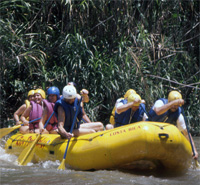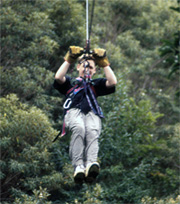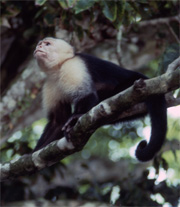|
San Jose, Costa Rica, that is. San Jose is located in Costa Rica’s central valley and is the nation’s capital. It is the starting place for our California Native Costa Rica Adventures. Located at the center of the Americas, between Nicaragua and Panama, Costa Rica has become one of the world’s most popular destinations for Eco-tourism due to its fantastic biodiversity—it may contain as many as 6% of the world’s plant and animal species, and its friendly people. It is a delightfully peaceful little country which constitutionally abolished its army more than sixty years ago. From its rain forests to its volcanoes and beaches it is a wonderful country to explore and we have been introducing people to Costa Rica for more than a quarter of a century. Our Nature Explorer Tours combine the best features of a guided tour with the flexibility of independent travel. We arrange everything just for you, so you can depart on any date. The tours are designed to maximize your time exploring the natural beauty of the country. Whether you want to raft down a thrilling jungle river or relax in a hammock it is all there for you. Please join us. |
|
Never Stop Traveling
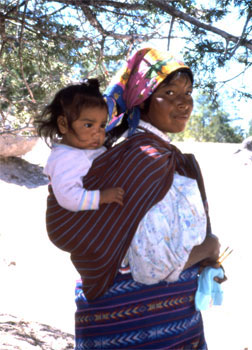
A recent post on the blog “never stop traveling, the source for travelers 50 and beyond,” listed the top tourism destinations in Mexico, as reported by the Mexico Tourism Board.
They noted that although there has been much coverage by the US media of the crime situation in some areas of Mexico, millions of US and Canadian citizens visit Mexico each year, and many live there year-round.
Among the destinations listed as Top Ten are Copper Canyon, Yucatan and Chiapas, all places which The California Native has specialized in for the past thirty years. We would love for you to join us.
It’s Time to Plan that Easter Trip to Copper Canyon, Mexico!
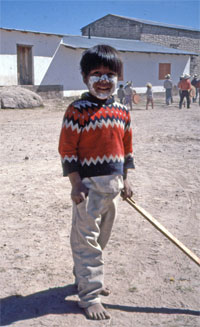
Easter is fast approaching and one of the most colorful and interesting places to celebrate is in Mexico’s Copper Canyon. The sleepy small towns are full of tourists—both Mexican and foreign—who have come to see the Easter celebrations of the Tarahumara Indians. The Tarahumara are outwardly Catholic, but their version of Catholicism is unlike any form we are familiar with.
Of all the religious ceremonies throughout the year, The Easter celebrations are the most important. Hundreds of men, women, and children converge on the local church from villages as far away as fifteen miles. These celebrations are for socializing and having a good time, but the Indians also expect their efforts to please God so that He will give them long lives, abundant crops, and healthy children.
To read the whole story behind these celebrations and traditions, Click here.
The celebrations begin on the Saturday prior to Palm Sunday, with speeches and ritualized dances. The Pharisees, their bodies smeared with white earth, and the Soldados dance to the beating of drums and the melody of reed whistles. About midnight, a mass is held in the church. Shortly after sunrise, bowls of beef stew, stacks of tortillas and tamales and bundles of ground, parched maize, are lifted to the cardinal directions, allowing the aroma to waft heavenward to be consumed by God. The food is then distributed among the people. At mid-morning the Soldados and Pharisees set up wooden crosses marking the stations of the cross, a mass is held, and the priest leads a procession around the churchyard, with the participants carrying palm branches.
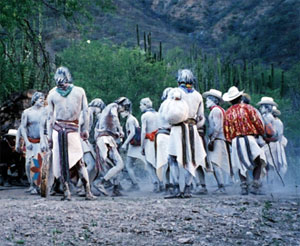
Three days later, on Holy Wednesday, the ceremonies resume, and for the next three days there are processions around the church, to protect the church and, by extension, God and God’s wife.
On the afternoon of Good Friday, the Pharisees appear with three figures made of wood and long grasses representing Judas, Judas’s wife, and their dog. Judas and his wife wear Mexican-style clothing and display their oversized genitalia prominently. The Pharisees and Soldados parade the figures around the church, dancing before them. The Pharisees then hide the figures away for the night.
On Saturday morning, the Soldados and Pharisees engage in wrestling matches, battling symbolically for control of Judas. The Soldados then take possession, shoot arrows into the three figures and set them afire. The people retire to continue the celebrations at the many tesguino drinking parties.
California Natives Attend 2011 World Tourism Fair in Morelia
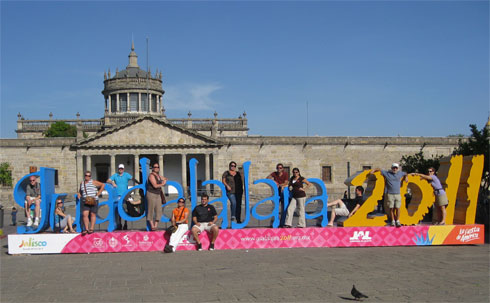
A few weeks ago we traveled, as guests of the Mexican Tourist Board, to the city of Morelia, Michoacan, to attend the 2nd Annual Feria Mundial De Turismo Cultural, a world tourism and cultural trade show which featured tourism vendors from all over Mexico, as well as international tourism representatives.
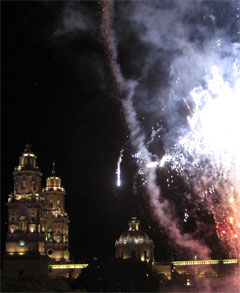
In Morelia, the show attendees included tourism professionals, travel agents, press, and photographers from all over the world. Along with the trade show, we attended cocktail parties which featured local gastronomy and music, and were treated to a special performance of the Ballet Folklorico de Mexico.
During our time in Morelia, the city celebrated the birthday of José Morelos, for whom the City is named. Morelos was a priest and revolutionary rebel leader who led the Mexican War of Independence movement after the execution of Miguel Hidalgo, in 1811. Four years later he was captured by the Spanish and also executed.
The city holiday is celebrated with parades, festivities, balloons, streets closed to cars, and families celebrating everywhere. The day is capped off with a dazzling pageant and fireworks show at the Cathedral.
We then traveled to Guadalara, which was was buzzing in preparation for the Pan American Games, a competition held between athletes from major countries of the Americas every four years. It is the second largest multi-sport event after the Summer Olympics. Everything was decorated—there were ticket booths, public art, banners, and sculptures about the games everywhere.
From Guadalajara we followed the Tequila Route to the town of Tequila, visiting the fields of blue agave and some of the distilleries, where we learned all about how the libation is made and the fine art of drinking it—which we diligently practiced for several days to make sure that we truly had the technique down (pun intended). We also visited the cellars of the Jose Cuervo distillery and drank some of the “Family Reserve”—some of the best tequila we’d ever tasted. Stay tuned for a future blog with the whole Tequila story.
What did we learn on this trip? That Mexican tourism is alive and well and the value for our U.S. and Canadian dollars is great. We never gave a thought to safety—we felt comfortable everywhere and we ventured on our own by local buses to nearby towns. We learned of so many new places we’d love to visit in Mexico, and we hope to introduce them to you, our California Native travelers, in the near future.
Mexico: The Royal Tour
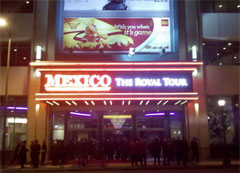
Last night we attended a VIP Reception and Premiere showing of Mexico: A Royal Tour, a film by Peter Greenberg for PBS.
In the film, President Calderón takes Greenberg on a tour of Mexico—but not your average tour. It’s a spectacular visit to many beautiful and unusual places with lots of adventure, including zip-lining, scuba and more. The President and his family clearly enjoy being the tour guides, and showing off these fabulous and interesting places, well-known and not so well-known. There is also discussion of the current security misconceptions. In the end, you will want to get on the next flight south.
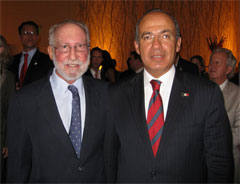
We arrived at the JW Marriott at LA Live in downtown LA, were given wrist bands, checked off several security lists, then passed through a metal detector and into a small ballroom. We enjoyed drinks and conversation with other celebrities such as Los Angeles Mayor Antonio Villaraigosa, Mexico’s Secretary of Tourism, Gloria Guevara, other dignitaries associated with both Mexico and the film, and entertainment icons including George Lopez, Russell Brand, Lionel Richie, James Caan, and Cindy Crawford. Then there was a buzz, lots more security, and the arrival of President Felipe Calderón and his wife, Margarita Zavala. After the camera flashes subsided, we were able chat with the President for a few minutes—our second meeting.
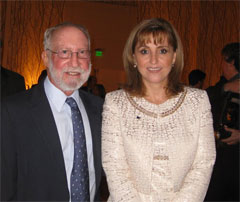
We moved on to the movie theater, and found seats with our names on them directly behind the President, the Mexican dignitaries and Greenberg, and next to the film’s director. After some speeches, the film began and we were entranced.
Afterward, talking to the Director, we learned that Mexico’s Copper Canyon was to have been part of the tour, but there were some weather issues on the days slated for filming so they did not film there. From previous conversations with President Calderón, we know that Copper Canyon is one of his favorite places in Mexico.
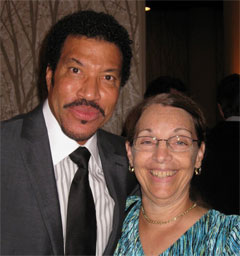
The movie premieres on Thursday, September 22, 2011 on many local PBS station (check listings for time) and will air several times in the next couple of weeks.
After the movie, check out our website and join us for a wonderful adventure in Mexico.
Bhutan’s Divine Madman
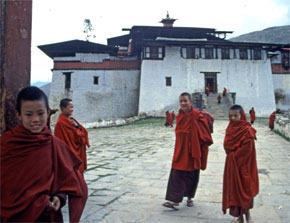
Bhutan is an exotic and strange destination. But of all of its unique characteristics, none seems more peculiar to us than the history and legends of the great religious teacher and holyman, Lama Drukpa Kunley, known throughout Bhutan as “The Divine Madman.”
Drukpa Kunley was born in Tibet in the year of the wood-pig in the eighth cycle—or, as we would call it, 1455.
As a child he was extremely precocious and had full memory of his previous incarnations. After his father was killed in a family feud, he became disillusioned with the world and dedicated himself to a religious life, eventually becoming a monk. In his early twenties, he gave up his robes and became a mendicant, wandering throughout the country and gaining mastery of the spiritual arts and magic.
As he traveled through Tibet and into Bhutan, he purposely spurned accepted ways of behavior as a method of calling attention to the hypocrisy, selfishness and greed of the world and thus lead people to adopt honest and spiritual lives. His unorthodox methods of religious teaching seem most peculiar from our frame of reference because they were based on a very ribald and debauched life style. The great lama spent much of his time singing and drinking with young ladies and deflowering virgins.
Reading the legends of Lama Drukpa Kunley is like reading Rabelais—both relying on the idea of divine excess. When he is not drinking chung (a sort of Tibetan beer) or making love to a maiden he is using his “Flaming Thunderbolt of Wisdom” to strike down evil demons. He is totally irreverent and ridicules the establishment, especially corrupt and self seeking priests. He performs magical feats—what the Judeo-Christian culture calls “miracles”—blessing or damning families, based on their moral treatment of others, turning tiny quantities of tea into amounts sufficient to quench the thirst of thousands, exorcising evil spirits, reforming demons, and instantaneously transporting himself to far off locations. In some of the stories he slaughters animals for their meat then, from their bones, restores them to life and sends them on their way.
He is adored by the Bhutanese who, despite being a very conservative society who never show affection in public, protect their homes from evil spirits and promote fertility by painting cartoon images of flying phalluses on the outside walls of their houses.
Near the town of Punakha, Drukpa Kunley founded a monastery dedicated to fertility. Each year hundreds of people come from all over Bhutan to pray for children. In the temple they are blessed by a monk holding a symbolic phallus.
Tucked away in the green valleys of the Himalayas, Bhutan is indeed an exotic country, so different from ours, yet the Bhutanese people make us feel welcome and invite us to try and understand their ancient and tranquil ways. The more we see of their country the more we want to return.
On the Road to Mandalay Where the Flyin’ Fishes Play–or Not
| “On the Road to Mandalay, Where the flyin’ fishes play, An’ the dawn comes up like thunder outer China ’crost the bay.” – Rudyard Kipling |
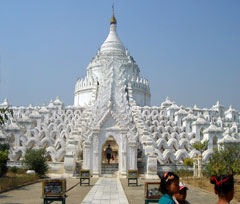
In 1892 Rudyard Kipling published Barrack Room Ballads, a collection of poems about the life of British soldiers stationed in colonial India. It included the poem “Mandalay,” in which a lovelorn soldier longs to return to Burma and his Burmese sweetheart. While the road to Mandalay may not necessarily lead to love, it does lead travelers to a fascinating experience of Myanmar’s culture and history.
The fabled city of Mandalay lies on the banks of the Ayeyarwady River. The last capital of Myanmar before the British took over in 1886, it is second only to Yangon (Rangoon) in size and lies in the center of the country. It was founded by King Mindon in 1857 in an empty area that, according to prophecy, would be the location of a town that would come into existence on the 2,400th jubilee of Buddhism. To fulfill this prophecy, the king moved his capital from Amarapura, dismantling the wooden buildings and royal palaces and loading them onto carts and elephants to relocate them seven miles south to Mandalay.
The city gets its name from Mandalay Hill, which rises more than 700 feet above the Mandalay Fort. Visitors can climb up two covered stairways that wind up the hill, stopping at the shrines, stupas and monasteries along the way. Near the top is a standing Buddha image pointing to the place where the city would be built according to the prophecy. Once on top, visitors are rewarded with sweeping views of the plains, the Palace and the Shan mountains in the distance.
The road to Mandalay is a route studded with ancient cities, where cars share the road with ox carts and markets teem with life. Although most of the significant buildings in the ancient royal capital of Amarapura were moved to Mandalay, some interesting structures still remain. The most picturesque is U Bein’s Bridge, the longest teak bridge in the world, which stretches three-quarters of a mile across Taungthaman Lake. A stroll across the busy bridge is a great way to experience the local ambiance. At one end of the bridge is the Maha Ganayon Kyaung monastery, where thousands of young monks live and study in a strictly disciplined setting. Each day at 11 a.m. they may be observed eating their main meal in complete silence.
A few miles south down the road is the ancient city of Ava (Inwa), which was the capital of the northern kingdom for almost 400 years, succeeding the nearby city of Sagaing. Both of these cities boast a number of interesting pagodas and historic sites.
One of the most interesting of the ancient cities on the road to Mandalay is Mingun, where in 1790 King Bodawpaya decided he would build the world’s largest pagoda. Despite employing thousands of slaves and prisoners to build it, he died before it was completed. What remains is the massive brick base that stands over 50 meters high. Although damaged by an earthquake, it is possible to climb the ruins for a wonderful view. The king also had a gigantic bell cast—weighing 90 tons, it hangs nearby and is the largest ringing bell in the world.
There is much to see on the road to Mandalay, but unlike the poem, there are no flying fishes and, alas, China is not across the bay.
Please join us on one of our California Native Myanmar Adventures.
Still Here and Doing Fine, Thank You!
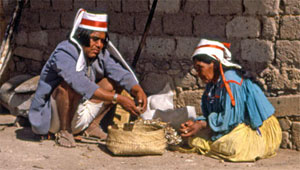
Anthropologist Carl Lumholtz predicted that the Tarahumara Indians would disappear within a century. A hundred years later, these gentle people, who inhabit Mexico’s Copper Canyon, continue to be the most populous indigenous group in northern Mexico.
Spanish explorers had entered the Sierra Madre Mountains by the mid-16th century. Gold and silver were soon discovered and mines began operating. The Indians were pressed into the labor force, often enduring the harshest conditions.
The Jesuits established their first mission pueblo in 1611. Although many attempted to ease the burden of the Indians, a great deal of prejudice existed. An early Jesuit wrote, “They are inclined to idleness, drunkenness and other vices. They are ungrateful, dull and stupid…very cunning and alert in evil things…They have no sense of personal honor nor the honor of their daughters.”
Forced to live in artificially-created communities, the Indians were susceptible to a variety of diseases, and epidemics swept the area. As the demand for labor increased, the Spanish raided the mission pueblos. The Jesuits managed to protect some of their charges, but many Tarahumara fled, hiding deep in Copper Canyon. The expulsion of the Jesuits from the Americas, in 1767, ended their efforts to protect the Indians, and the Franciscans, who succeeded them, were not as effective.
Mexico attained independence in 1821 and soon established huge land grants in Tarahumara country. The Indians were uprooted again, and fled, often onto lands of other indigenous people. Fighting often resulted.
The Revolution of 1910-21 resulted in the re-creation of the pre-hispanic communal landholding system known as the ejido. The Tarahumara received some benefits from this, as much of this land has economic potential for lumbering, agriculture, and tourism. Around 60,000 Tarahumara still inhabit caves and simple dwellings in Copper Canyon.
The California Native has for many years assisted these people, donating clothing, school supplies and money. Some of our travelers have returned to volunteer in local clinics. Tourism is a positive factor, and visitors gain a new appreciation for these noble people who have survived and thrived despite Lumholtz’ dire predictions.
When Times are Slow It’s Time to Go
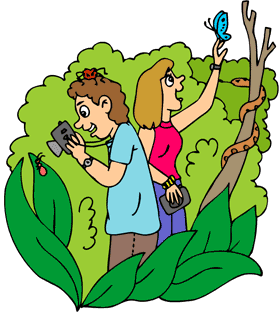
The economies of the world’s countries are slow. Travel and tourism are down. Hotels have plenty of space. Crowds are down. Now is the perfect time to take that trip you have been dreaming about for so long. Travel now before the crowds come back and the prices go up. Join us on a trip to one of the exotic destinations around the globe that we specialize in. Whether it’s Mexico’s fabulous Copper Canyon, the magical Himalayan Kingdom of Bhutan, or the rainforests of Costa Rica we are ready for your call.
Always wanted to come eyeball-to-eyeball with a flightless cormorant or a giant tortoise? Then the Galapagos is for you. How about enjoying a fantastic cruise through the Straits of Magellan, hiking on a glacier and sipping whiskey over-the-rocks of ancient glacial ice? Patagonia is the place, or travel back in time to visit the mighty empire of the Maya—the Yucatan is your destination. Perhaps you prefer to stroll or bicycle through the green hills and friendly villages of Ireland? These are just a few of the adventures that we have lined up for you.
Wherever your dream destination is, now is the best time to travel. When the times are slow it’s time to go.
Flying on a Dragon
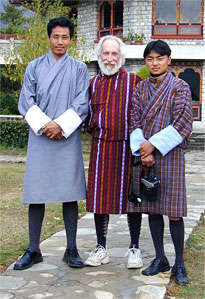
Soaring through the sky, on possibly the world’s most spectacular flight, the snow-covered peaks of the Himalayas come into view. On our left is Everest, the “top of the world,” accompanied by a vast panorama of the Earth’s highest mountains. We are headed for Paro, the only international airport in the Kingdom of Bhutan, aboard Druk Air, the Royal Bhutanese Airline. The word Druk means “Dragon,” and our flying dragon is the only airline allowed to enter the country.
As we approach Paro, our plane drops steeply down and enters a deep valley, weaving its way between the mountains in a breathtaking and slightly scary descent to a smooth landing at the little airport, originally built by the British military. And then we are there, walking across the concrete to the small terminal building and our first visit to the “Shangri-La” country of Bhutan.
Druk Air was established by Royal Proclamation in 1981 and began operations in 1983 when its first plane, an 18-seat German Dornier 228-220, landed at Paro carrying the Royal Flag of the Kingdom. The airline, whose fleet now consists of four aircraft, two British Aerospace 70 passenger BAe146-100’s and two new 124 passenger Airbus A319’s, is the smallest national carrier in the world.
All takeoffs and landings at Paro are by Visual Flight Rules (VFR). This means that the pilot must be able to see the runway and all of the surrounding hills. He cannot land or take off using instruments. No flights operate at night or in poor visibility. Flights can sometimes be delayed up to a day or two due to inclement weather. The airline operates from Paro to six cities: Bangkok and Calcutta, four times a week, Katmandu and New Delhi, twice a week, and Dhaka and Yangon, once a week. Flights from Bangkok make a stop to take on extra fuel in case they cannot land at Paro and have to return. Druk Air’s safety record is perfect—they have been flying for twenty-three years and never had an accident!
After going through immigration, (they have a photo on file of everyone scheduled to enter their country), and meeting our tour guide, we look back and see the airport staff closing the airport—after all, on most days there is only one flight in and one flight out of the country.
We invite you to join us on a California Native tour to Bhutan, this amazing little country at the roof of the world.

